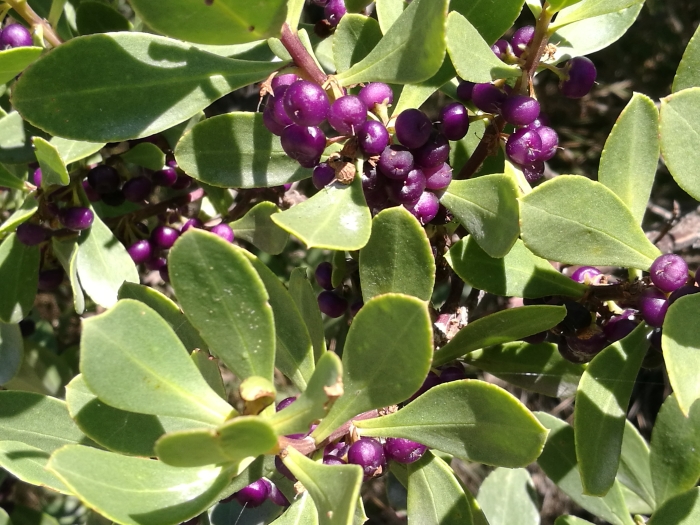Common Boobialla
(Myoporum insulare)
Common Boobialla (Myoporum insulare)
/
/

Margaret Donald from Sydney, Australia
CC BY-SA 2.0




































Estimated Native Range
Summary
Common Boobialla is valued for its rapid growth and resilience, making it an excellent choice for a fast-growing hedge or windbreak, particularly in coastal areas where it tolerates winds and drought well. It thrives in well-drained soils and requires minimal maintenance once established. This species is easily propagated from cuttings and can be used in urban plantings, coastal reclamation, and as a general garden specimen. However, gardeners should be aware that Myoporum insulare can become invasive outside its native range, so it is important to check local regulations before planting. In cultivation, it prefers full sun to part shade and is tolerant of a range of soil types, provided they are well-drained.CC BY-SA 4.0
Plant Description
- Plant Type: Shrub
- Height: 1-1.5 feet
- Width: 3-6 feet
- Growth Rate: Moderate
- Flower Color: White
- Flowering Season: Spring
- Leaf Retention: Evergreen
Growth Requirements
- Sun: Full Sun, Part Shade
- Water: Low, Medium
- Drainage: Fast
Common Uses
Bee Garden, Butterfly Garden, Deer Resistant, Edible*Disclaimer: Easyscape's listed plant edibility is for informational use. Always verify the safety and proper identification of any plant before consumption., Fire Resistant, Groundcover, Hedges, Low Maintenance, Street Planting
Natural Habitat
native to coastal dunes and limestone cliffs in Southern Australia, including Tasmania
Other Names
Common Names: Boobialla, Manatoka, Native Juniper
Scientific Names: , Myoporum insulare, Myoporum serratum, Myoporum tuberculatum, Myoporum gracile, Myoporum adscendens, Myoporum apiculatum, Myoporum serratum var. tuberculatum, Myoporum tasmanicum, Myoporum glandulosum
GBIF Accepted Name: Myoporum insulare R.Br.